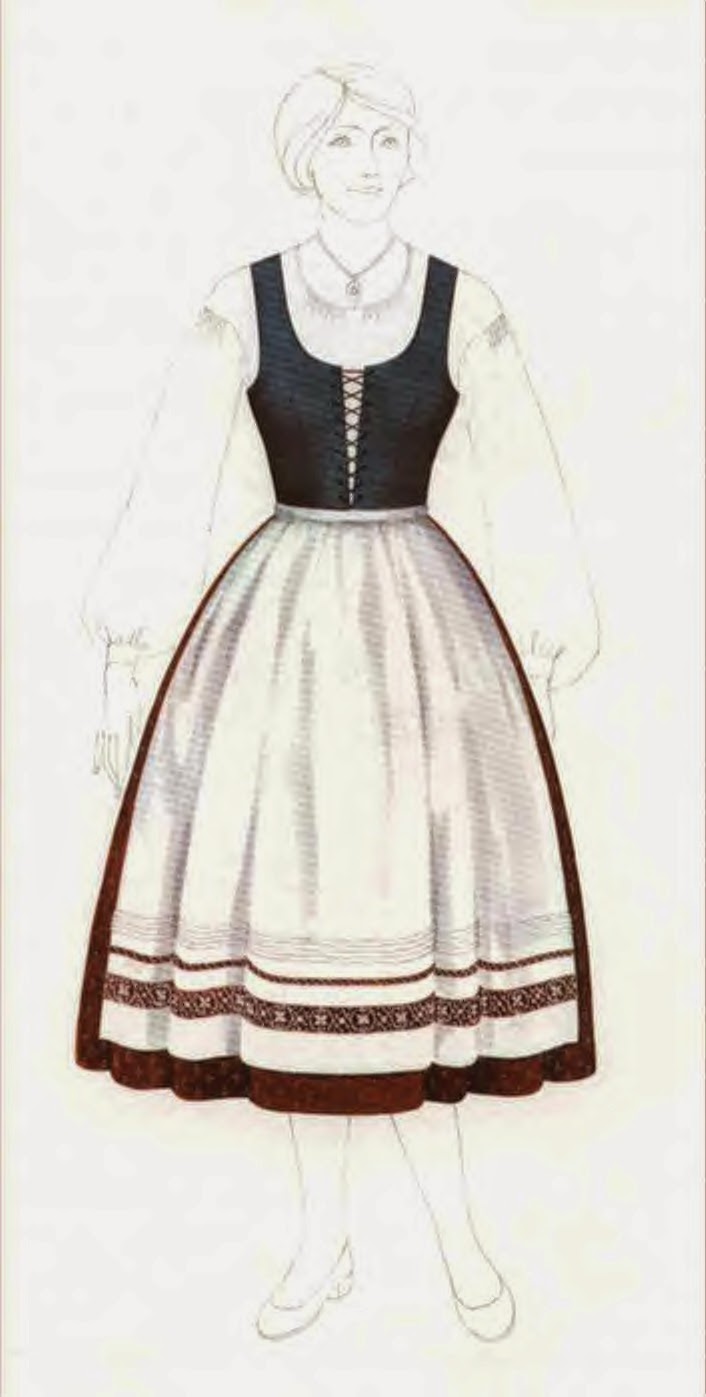Hello all,
Today I would like to spend a bit of time talking about Austrian Dirndls. The focus of this article will be specifically the tracht, or costume of the province of Lower Austria, Niederösterreich.
This is in the northeast of the country.
The province is divided into four regions which completely surround Vienna, which is considered to be separate. The Forest quarter, the Wine quarter, the Industry quarter, and the Cider quarter.
The modern dirndl has its roots in the traditional daily wear of the German speaking people. In the 1800's there was a movement to replace some of the older and very complicated Folk Costumes with something simpler and more practical, and thus the dirndl was developed.
Now they are very popular, and city women have even developed very elegant and costly versions for formal wear. They are made from solid colored or printed cloth, and may be in cotton, linen, wool or even silk. They may have exquisite detail work, ruched ribbons, points, or other details. Generally they are made in quiet colors.
The outfit consists of a long or short sleeved blouse, apron which is smock gathered into the waistband, a cylindrical skirt, underskirt and bodice. In Austria the bodice is generally made in a different color from the skirt. The hem is generally several inches below the knee, but may be full length in formal versions. The fabric used varies from a simple gingham or calico to beautiful hand printed silk. Although there seems to be a general uniformity to dirndls, there is a great variety in detail. In particular the bodices vary a lot in their ornament and cut.
These two are from Vienna, Doebling on the left, and Sievering on the right. This is the classic hemline of the dirndl.
These show hemlines shortened under the influence of the 1960's and 1970's.
It is sometimes reported that the placement of the apron's knot is significant: on the right if single, on the left if married or 'taken', in the front center if a virgin, and in the back if a widow.
I will be presenting a number of variants from Lower Austria and also Vienna. The couple at the top of the article are wearing one form of Tracht from Vienna. Some variants are particular to certain regions, others are more general.
I will be presenting a variety of cuts for the bodice. They will be superimposed onto this generic pattern.
The following information is taken from 'Oesterreichische Trachtendirndl' by Maria Strnad, printed in 1950.
Here is a 'zackendirndl' from Lower Austria with points on the neck and armholes, and fine lace on the neck and opening of the blouse.
Here is a Holiday dirndl from Lower Austria.
The gathered band across the bust is found in many places in eastern Austria.
Industrieviertel
This dirndl from the Wienerwald has straps that cross in back, a gingham skirt and floral print bodice.
This dirndl is from the Piesting valley, in the east of the Industrieviertel.
These next two are from the Wechsel area, on the southern border of the Industrieviertel
Puchberg, in elegant colors, with ruched ribbon and a v in the back.
Mostviertel
Wachau is a part of the Danube valley between Melk and Krems. It forms the border between the Waldviertel and the Mostviertel. Here is a dirndl from Wachau. This has a rather complex princess cut and is trimmed with ruched ribbon.
These two are from the area around St. Poelten
Waldviertel
A very elegant example.
This is a winter tracht with a spencer jacket and a silk scarf.


Weinviertel
An example from the Kamp valley in gingham.
Another winter outfit with jacket.
Vienna.
Some examples of dirndls from Vienna and environs.
Here are two dirndls from Vienna, a formal full length one from Sievering, and an everyday one from Grinzing.
These last are examples of formal full length dirnds appropriate for weddings, the opera, ceremonial occasions and other times when one wishes to dress one's best.
Brides, as in so many places, will often wear a crown.
Thank you for reading, I hope that you have found this to be interesting and informative.
A website where one can buy Lower Austrian Tracht.
http://www.trachtenkoestler.at/niederoesterreich.php
email: rkozakand@aol.com
Source Material:
Maria Strnad, 'Oesterrichische Trachtendirndl', Vienna, 1950
Rudolf Fochler, 'Trachten in Oesterreich', Munich, 1980
Helena Gruenn, 'Trachten in Niederoesterreich', Linz, 1971
author unknown, Tracht in Wien und sein umland'























































